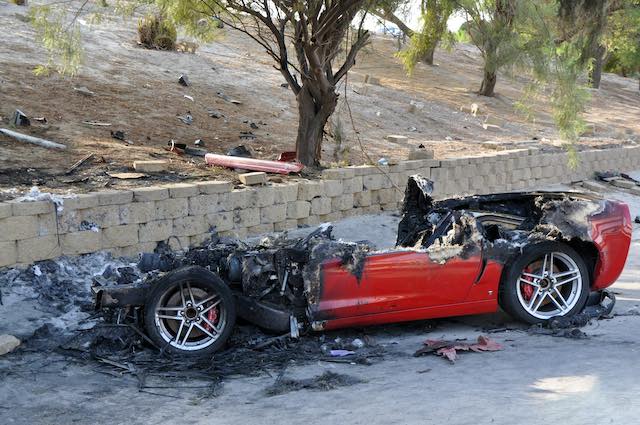The National Highway Traffic Safety Administration (NHTSA) says there were 31,720 traffic fatalities during the first nine months of 2021, which was 12 percent more than in the same months in 2020 and 18 percent more than 2019. The biggest increases in fatalities were in Idaho (36%), Nevada (30%), Oregon (29%), and Minnesota (26%). Fatalities declined in Nebraska (-18%), Maine (-14%), Maryland (-13%), Rhode Island (-8%), Wyoming (-6%), and six other states.
Blame the increase in traffic fatalities on Generation Y and Zers who are more likely to engage in risky behavior. Photo by Frans Van Heerden.
NHTSA doesn’t speculate on why fatalities have increased by such a large amount. However, a report from the American Automobile Association provides one answer: people who are more likely to take the risk of traveling during a pandemic are also more likely to engage in risky behavior while driving.
AAA does an annual survey of traffic safety culture, the most recently released version of which was done in 2020. A careful look at the data revealed that 60 percent of Americans said they drove less during the pandemic, 36 percent said about the same amount, while 4 percent drove more.
People who drove less tended to be older (median age of 50) and predominately female, while people who drove more tended to be younger (median age of 39) and predominately male. Moreover, the ones who drove more were most likely to admit to having engaged in risky behavior, such as “reading and typing text messages, speeding on freeways and residential streets, running red lights intentionally, changing lanes aggressively, driving under the influence of alcohol, and driving after using marijuana,” as well as driving without wearing a seatbelt.
NHTSA data show that, from 2017 through the first half of 2020, fatalities declined (relative to the same quarter in the previous year) in 10 out of 14 quarters, and the increases were small in the four quarters where they rose. In contrast, the increases in the last two quarters of 2020 and first two quarters of 2021 were all very large: around 13 percent in the first three of those quarters and more than 21 percent in the second quarter of 2021, which was the highest quarterly increase since NHTSA began keeping track of quarterly data in 1975. The “good news” is that the increase in the third quarter of 2021 was “only” 4 percent, which is still more than 4 percent too high.
It seems hard to believe that a mere 4 percent of drivers could be responsible for such a massive increase in traffic fatalities. Data for 2020 show that total fatalities were 7 percent greater than in 2019, and the biggest increases were at night (+11%), on weekends (+9%), in the 25-34-year-old age class (+18%), and involved people not wearing seat belts (+15%). While there may be other factors involved, these numbers support the idea that risky behavior is an important one.









Caution! From the footnote to the chart …
2020 and 2021 statistical projections and rates based on these projections.
From the discussion …
The annual report files for 2020 and 2021
will be available next year, which usually results in the
revision of fatality totals and the ensuing fatality rates
and percentage changes.
How about speeding as a cause of increased accidents? With the roads not as crowded it seems drivers are driving faster. On the freeway it seems there are more speederd weaving through cars, frequently with no signals for lane changes.
https://www.latimes.com/world-nation/story/2021-08-08/pandemic-set-off-deadly-rise-in-speeding-that-hasnt-stopped
rovingbroker — Changes from preliminary numbers are usually small enough that the overall conclusions here aren’t likely to change.
Paul — Speeding is cited as a factor in only a small minority of accidents. I’ll get into this in more detail when the complete 2020 data are released.
Antiplanner — My concern with the preliminary numbers is that the situation is not just “fewer” commuters (for example) but it’s that the mix has likely changed and peoples’ habits have changed and neither interpolation nor extrapolation will give useful information.
The estimators may have done a good job but they may be making projections in an environment that they’ve never seen before.